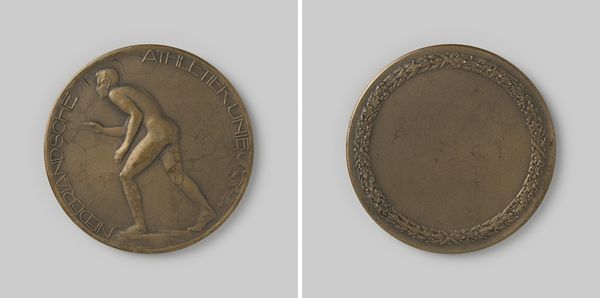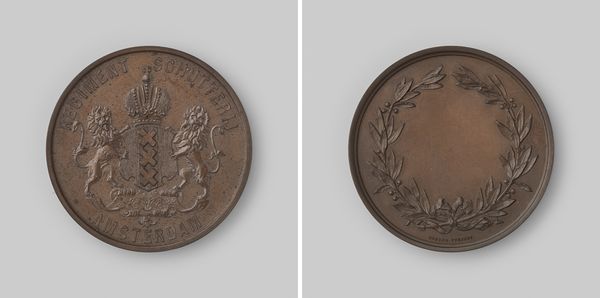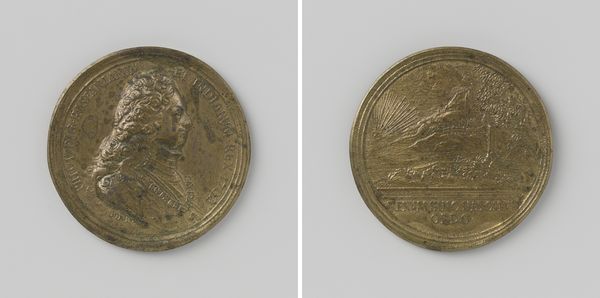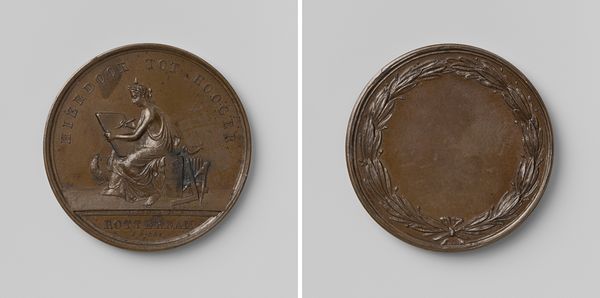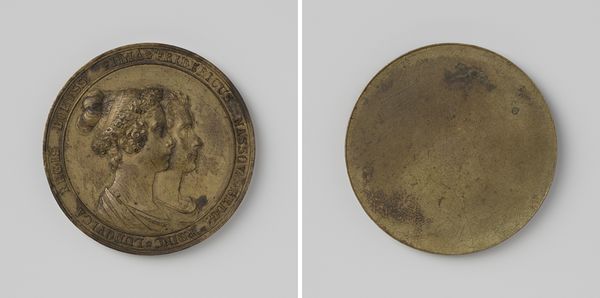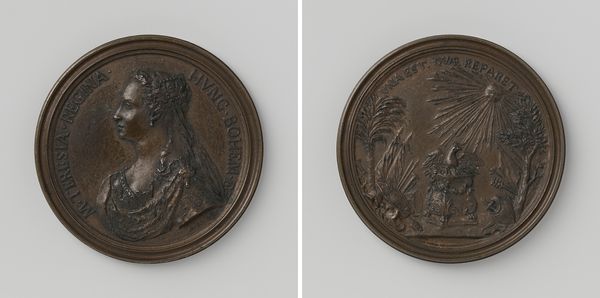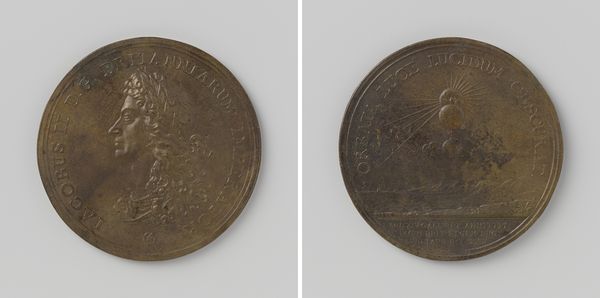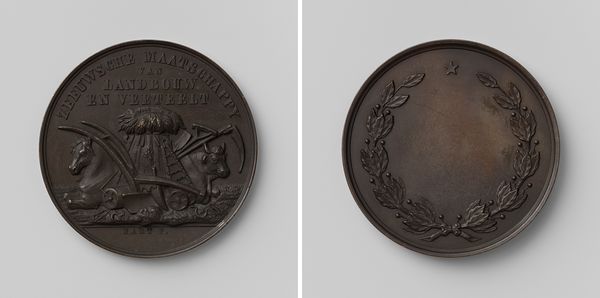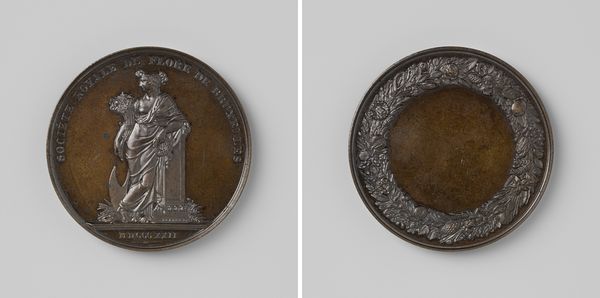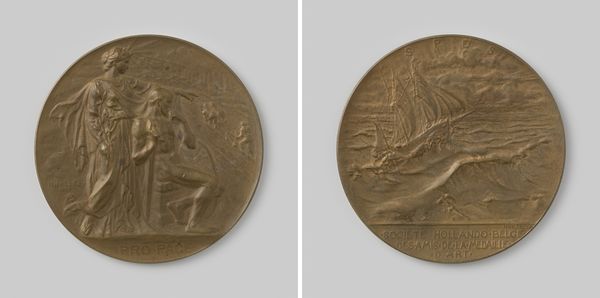
metal, bronze, sculpture
#
portrait
#
medal
#
metal
#
sculpture
#
bronze
#
sculpture
Dimensions: diameter 5.0 cm, weight 53.38 gr
Copyright: Rijks Museum: Open Domain
Curator: Take a look at this bronze prize medal crafted by Abraham Hesselink in 1924. It commemorates the Nederlandsche Dobermann Pinscher Club. Editor: Wow, it's...intense! The dog’s profile is so sharp and serious. A Dobermann in bronze—it feels almost eternally vigilant. Curator: Note how Hesselink meticulously renders the Dobermann's musculature. The use of light and shadow on its face enhances its powerful features, creating a pronounced sense of depth. The inscription arcing around the upper edge reinforces the medal's purpose. Editor: Absolutely. It's almost like the medal is bestowing some of the dog’s own traits to its recipient: loyalty, power, sharpness. The laurel wreath on the back echoes that victory feeling. But something about the bare expanse on the reverse makes it feel a little...empty. Like potential unfulfilled, perhaps? Curator: One could interpret the wreath as symbolic of victory, but in a broader context, consider that the laurel also signifies peace and intellectual achievement. Given the club's emphasis on breed standards and training, it can also signal dedication to excellence. It's about more than brute strength, it represents the cultivation of very particular attributes. Editor: I get that. It’s not *just* a tough-looking dog; it’s a standard, an ideal, perfectly embodied in metal. Makes you wonder what the winning Dobermann was really like. Did he know he was all that? Or was he just happy to chase squirrels? Curator: Whether or not the dog understood its iconic status, Hesselink's medal captures the breed's essence, celebrating both physical form and the more abstract concepts of loyalty and discipline. Editor: In a weird way, it captures the strange and beautiful bond we have with dogs. Seeing that now!
Comments
No comments
Be the first to comment and join the conversation on the ultimate creative platform.
